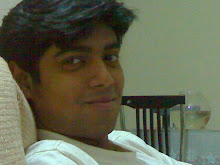Death and the Dalit
Published in the Edit Page of The Pioneer on Sept 19, 2003
Boy met girl and fell in love. They decided to be together for the rest of their lives. Only they weren’t allowed to. Because the boy was a Dalit, the girl a Rajput. Because the girl’s family thought it is more ‘honourable’ to keep her from eloping with a lower caste than to let her be. Because ‘honour killings’ are still very much a reality in this country. Because you can kill a couple in broad daylight in front of an entire village and nobody would intervene. Because all the hogwash about multiculturalism, secularism and tolerance notwithstanding, caste is still a curse in our society.
On September 12, Chander and Sajni, residents of Bhopur village in Bulandshahr, Uttar Pradesh, were lynched to death by a mob. The couple had fled from their village in the district and come to Delhi to begin life afresh after Sajni was forcibly married off. Their happiness was short-lived, though. Two days later, a busload of villagers reached Delhi in search of them. After finding the lovers, the mob dragged them out of their house and took them back to the village. They were tortured throughout the journey back to Bhopur. Beaten with sticks and rods, the couple was half dead even before they reached the village. Whenever they collapsed, they were forced to stand and again hit on the legs. On reaching the village, Chander and Sajni were paraded before being beaten to death. Their bodies were then peppered with gunshots and finally burnt on piles of cowdung. Another ‘honour’ killing was accomplished.
This is not the only instance of atrocities on Dalits for committing the ‘unpardonable sin’ of marrying upper castes in recent history. Now too long ago, four Dalits of a family in Hardoi, UP, were killed for the same reason. Briraj, a young Dalit, had eloped with Poonam, who happened to be the daughter of an upper caste Rajput police sub-inspector. Hence the outrage.
‘Honour killings’ take place quite frequently in the states of UP, Madhya Pradesh, Bihar and Rajasthan. And when they cannot lay their hands on the male members of the ‘errant’ Dalit lover, the upper caste revenge-seekers pounce on the women. There have been many instances when the female relatives of some Dalit boy, who had eloped or married an upper caste, were dragged out of their homes, stripped and paraded naked in front of the entire village and then gangraped.
Most such incidents don’t even make it to the pages of mainline dailies these days. Even if they do, they are pushed to some obscure corner of an inside page. Chander’s and Sajni’s killings created a bit of a flutter as they were dragged out of their home in Delhi, taken back to their native village and then murdered.
What is most shocking here is the pronounced bias exhibited by our law enforcers. In most case, the victims are tortured before being killed. The torture takes place over the period of several hours, sometimes even throughout the day, in front of the entire village. And even when the matter is related to local police chowkees, no action is taken. The officials posted there live up to their reputation of turning up only after the crime has taken place. The reason: In most cases belonging to the upper castes themselves, law enforcers display their silent approval by letting such atrocities take place. Reports by Amnesty International suggest there have been cases where the authorities were party to the crime.
In a country where caste oppression remains a reality even in the 21st century, and the socially oppressed have no one to turn to but law-enforcers, such partiality should not go unpunished.


0 Comments:
Post a Comment
Subscribe to Post Comments [Atom]
<< Home